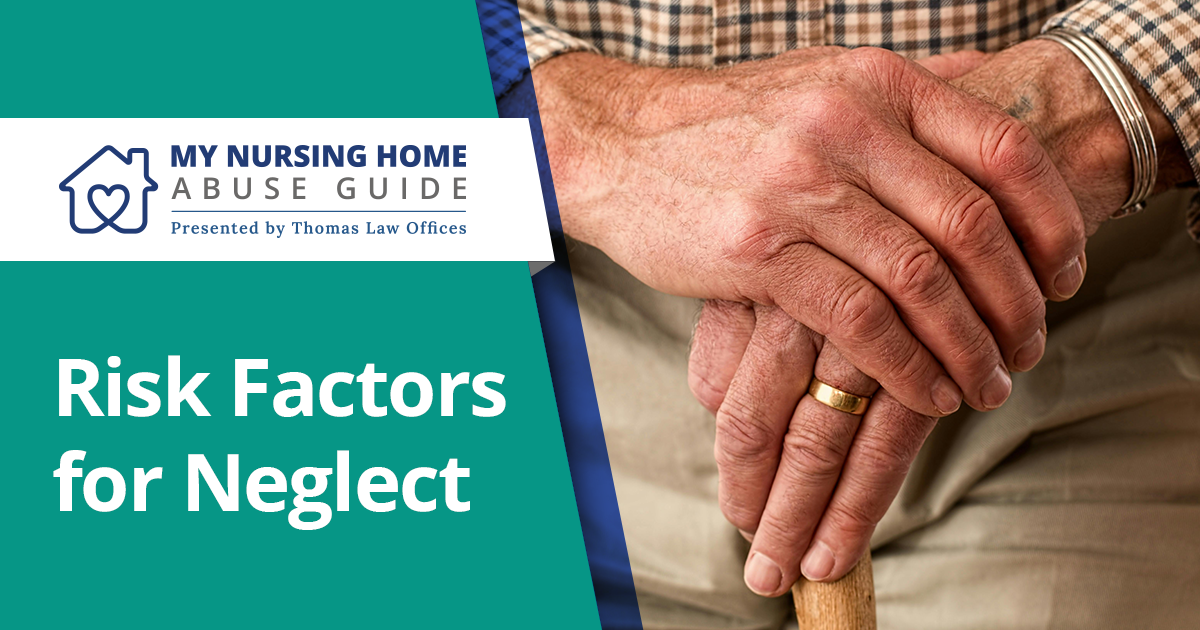Your Guide to Nursing Home Abuse & Prevention
Millions of elderly adults live in nursing home facilities.
Every one of them deserves to feel safe, protected, and respected.
Millions of elderly adults live in nursing home facilities.
Every one of them deserves to feel safe, protected, and respected.

Nursing homes play a vital role in providing care for our elderly and vulnerable. However, neglect within these facilities can have devastating consequences for residents.
Understanding the risk factors associated with nursing home neglect is crucial for ensuring the safety and well-being of our loved ones.
Nursing home neglect refers to the failure of a nursing home facility or its staff to provide adequate care, attention, and assistance to residents, leading to harm or the deterioration of their health and well-being. Neglect can take various forms, including:
Numerous studies and reports suggest that nursing home neglect is a significant issue affecting a substantial number of residents across the country.
According to a report by the Department of Health and Human Services Office of Inspector General, about one in three nursing home residents experienced harm in a skilled nursing facility due to substandard care, including neglect, between 2016 and 2018.
Additionally, data from the National Center on Elder Abuse (NCEA) indicates that a significant percentage of nursing home residents have reported experiencing neglect or have witnessed neglect occurring in their facilities. In a study of over 2000 nursing home residents, the NCEA reported that around 95% of nursing home residents have witnessed or experienced neglect, while nearly two-thirds of nursing home staff have admitted to committing neglectful acts themselves.
There is strong evidence that there’s a higher risk of being abused among those with cognitive impairment or dementia, as well.
Nursing home neglect can have severe consequences for residents, causing a decline in their overall quality of life. Nursing homes need to provide adequate staffing, training, resources, and oversight to prevent neglect and ensure the well-being of their residents. Recognizing the risk factors of nursing home neglect and taking proactive measures to correct them is key.
Common risk factors include:
One of the primary risk factors for nursing home neglect is staffing shortages. In facilities with insufficient staff members to adequately care for residents, there is a higher likelihood of neglect.
Overworked and overwhelmed staff may struggle to meet the needs of all residents, leading to lapses in care and attention.
High turnover rates among nursing home staff exacerbate the issue of staffing shortages. Constantly changing personnel can disrupt the continuity of care and make it difficult for residents to form trusting relationships with their caregivers.
This instability within the workforce can contribute to neglectful practices and substandard care.
Another risk factor for nursing home neglect is inadequate training among staff members.
Proper training is essential for ensuring that caregivers have the knowledge and skills necessary to meet the complex needs of residents. Without adequate training, staff may struggle to recognize signs of neglect or provide appropriate care, putting residents at risk.
In facilities with a lack of supervision, staff members may not receive the oversight and support they need to effectively carry out their duties. Without proper supervision, caregivers may cut corners or neglect their responsibilities, leading to lapses in care and potential harm to residents.
The physical environment of a nursing home can also contribute to the risk of neglect.
Facilities that are poorly maintained or lack essential resources may struggle to provide adequate care to residents. Overcrowding, unsanitary conditions, and inadequate equipment can all increase the likelihood of neglect occurring.
Nursing homes operating on limited budgets may struggle to invest in the resources needed to maintain a safe and comfortable environment for residents. This can include things like medical supplies, staff training programs, and facility upgrades.
Without sufficient resources, facilities may be forced to prioritize cost-cutting measures over resident care, putting residents at risk of neglect.
Underreporting of neglect is a significant challenge in many nursing homes. Residents may be hesitant to speak out about their experiences due to fear of retaliation or concerns about not being believed.
Additionally, some facilities may be reluctant to report instances of neglect due to the potential for negative publicity or legal repercussions.
Effective regulatory oversight is also essential for holding nursing homes accountable for the care they provide to residents. However, regulatory agencies may be understaffed or lack the resources needed to properly monitor facilities. This can create gaps in oversight and enforcement, allowing neglect to go unchecked.
Identifying and addressing the risk factors associated with nursing home neglect is essential for protecting the safety and well-being of residents.
By addressing issues such as staffing shortages, inadequate training, poor facility conditions, and underreporting, we can work towards ensuring that nursing home residents receive the high-quality care and support they deserve.
We must advocate for improved regulations and oversight to hold facilities accountable and prevent neglect from occurring in the future. You can learn more about the next steps to take by contacting us today.
This website was created and is maintained by the legal team at Thomas Law Offices. Our attorneys are experienced in a wide variety of nursing home abuse and neglect cases and represent clients on a nationwide level. Call us or fill out the form to the right to tell us about your potential case. We will get back to you as quickly as possible.
866-351-2504